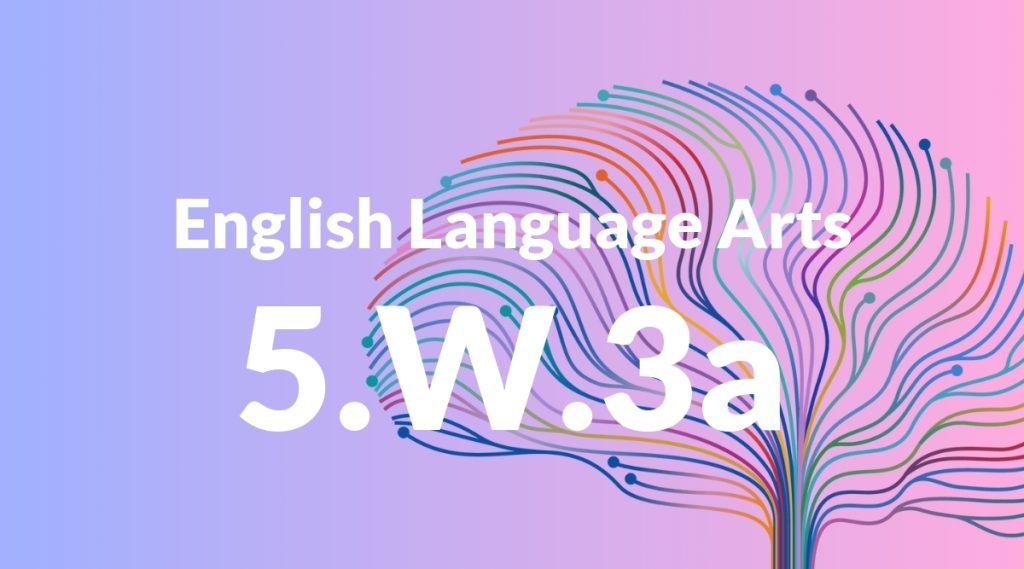Standard: 5.W.3a – Orient the reader by establishing a situation and introducing a narrator and/or characters; organize an event sequence that unfolds naturally.
Grade level: Grade 5
Subject: English Language Arts
Domain: Writing
Teacher Overview
This standard focuses on helping students write narratives that are well-organized and engaging. By learning to establish a situation and introduce characters, students build a foundation for creating compelling stories. This skill is crucial for effective communication and creative expression. Before tackling this standard, students should be comfortable with basic sentence construction and paragraph writing. They should also understand the elements of a story, including setting, characters, and plot.
After mastering this standard, students will be able to revise and edit their narratives for clarity and coherence, and use descriptive language and dialogue to enrich their stories.
Common Misconception 1
A common misconception is that all stories must start with an action scene. This is incorrect because stories can begin in various ways, such as with a description of the setting or an introduction to the characters, to set the stage for the narrative.
Intervention 1
To address this misconception, provide examples of different story beginnings and engage students in discussions about how each type sets the stage for the story. Practice writing story openings using different techniques.
Common Misconception 2
Another misconception is that events in a story can be presented in any random order. This is incorrect because a logical sequence of events helps the reader follow the story and understand the plot.
Intervention 2
Use graphic organizers like story maps or timelines to help students plan their narratives. Practice sequencing activities where students arrange events in logical order before writing.
Prerequisite Knowledge
Students should understand basic sentence structure, have experience writing simple paragraphs, and be familiar with story elements such as setting, characters, and plot.
Subsequent Knowledge
Students will develop skills in revising and editing their writing for clarity and coherence, as well as in using descriptive language and dialogue to enhance their narratives.
Instructional Activities
- Have students write a personal narrative about a memorable event.
- Create a class story where each student adds a sentence to build a narrative.
- Use story maps to plan and sequence events before writing.
- Conduct peer review sessions where students give feedback on each other’s story structure.
- Write diary entries from the perspective of a historical figure.




